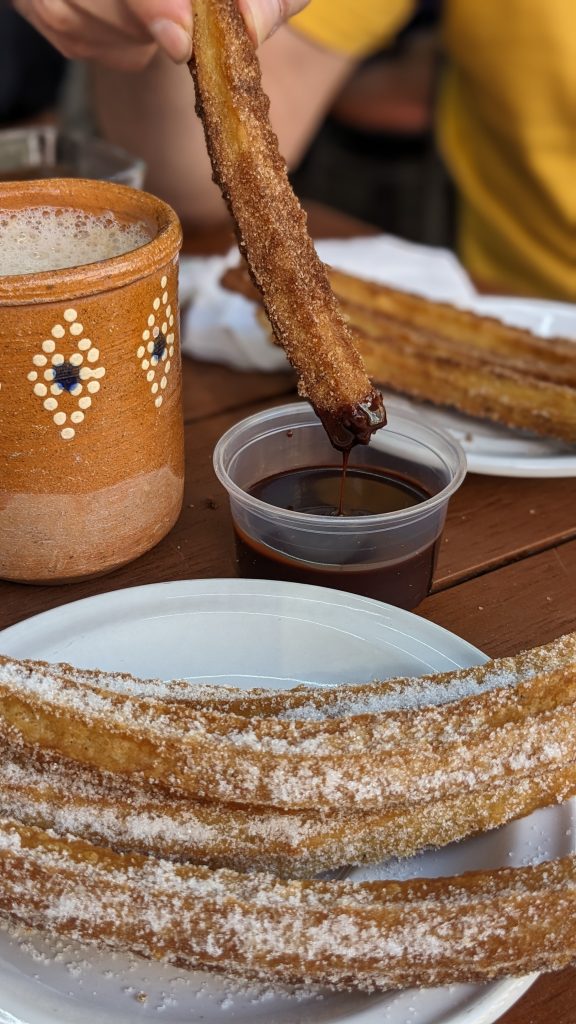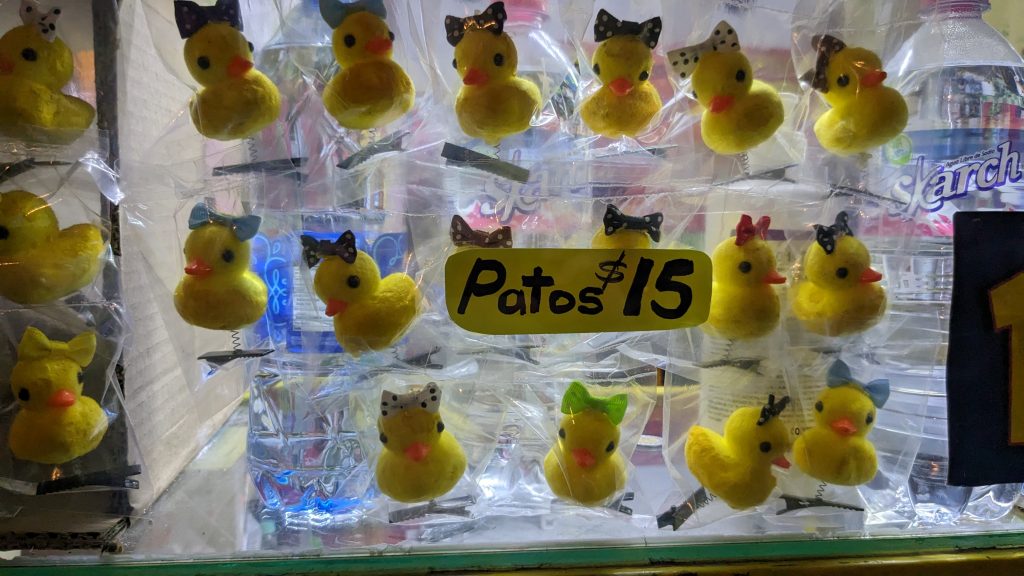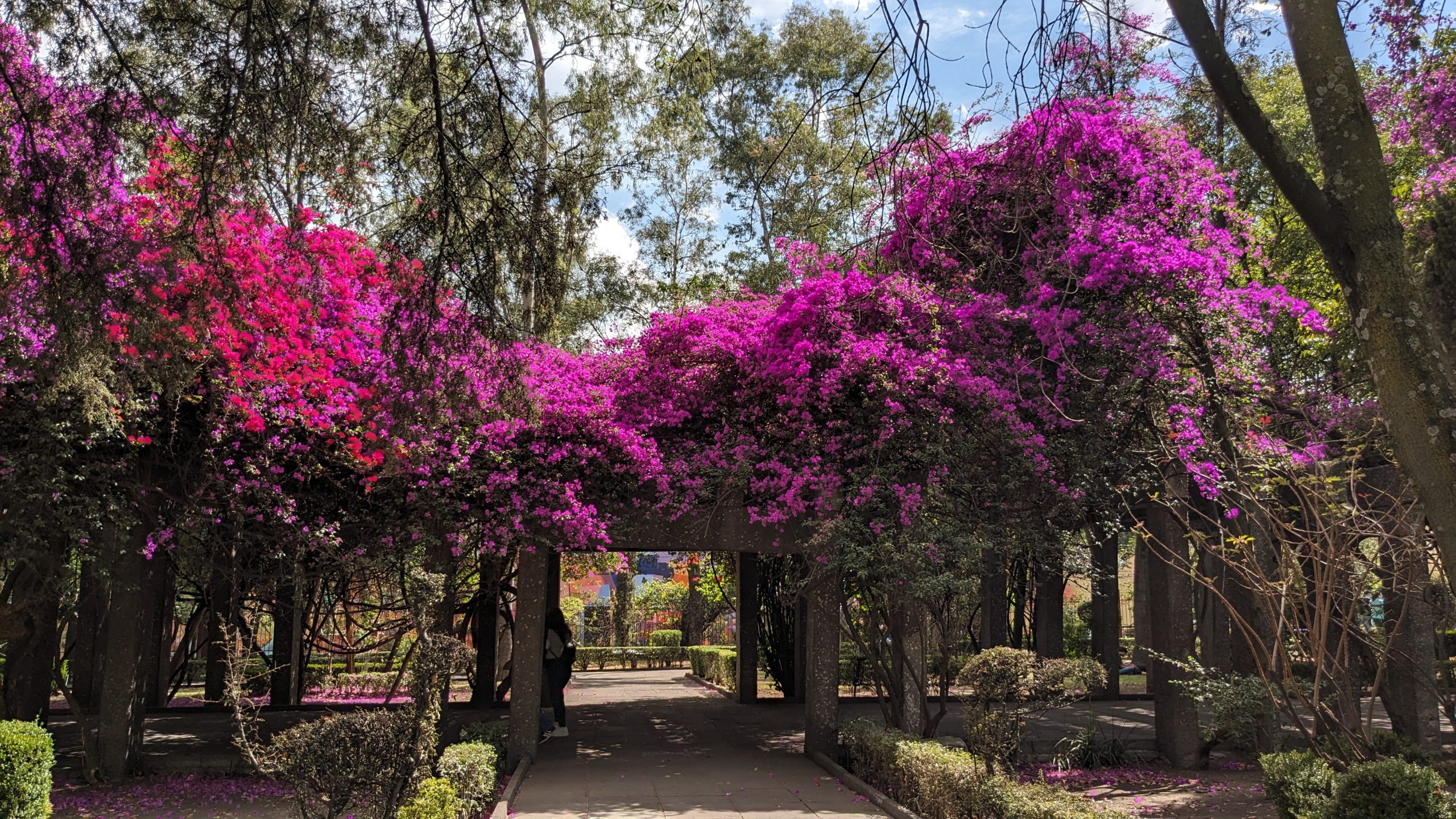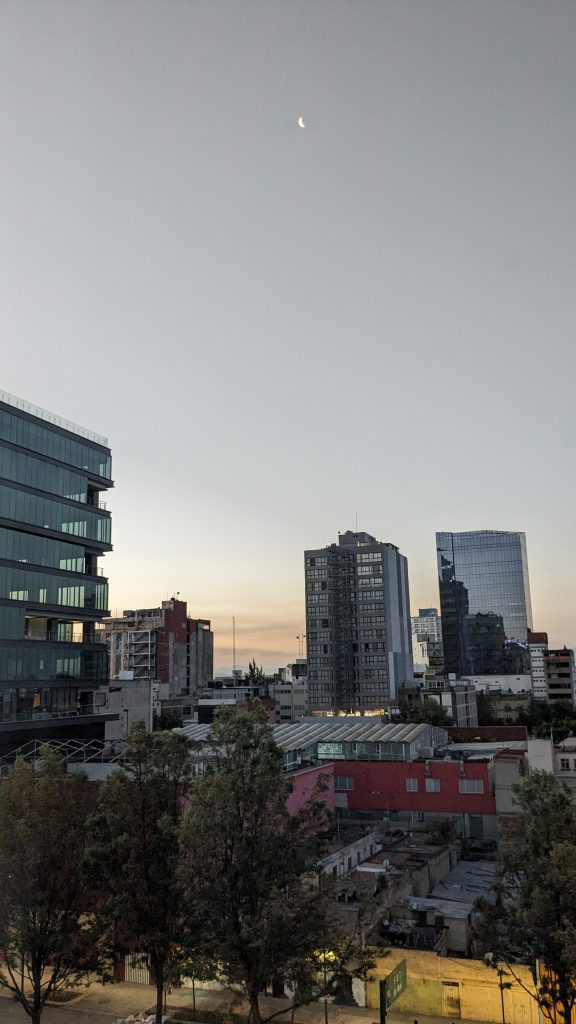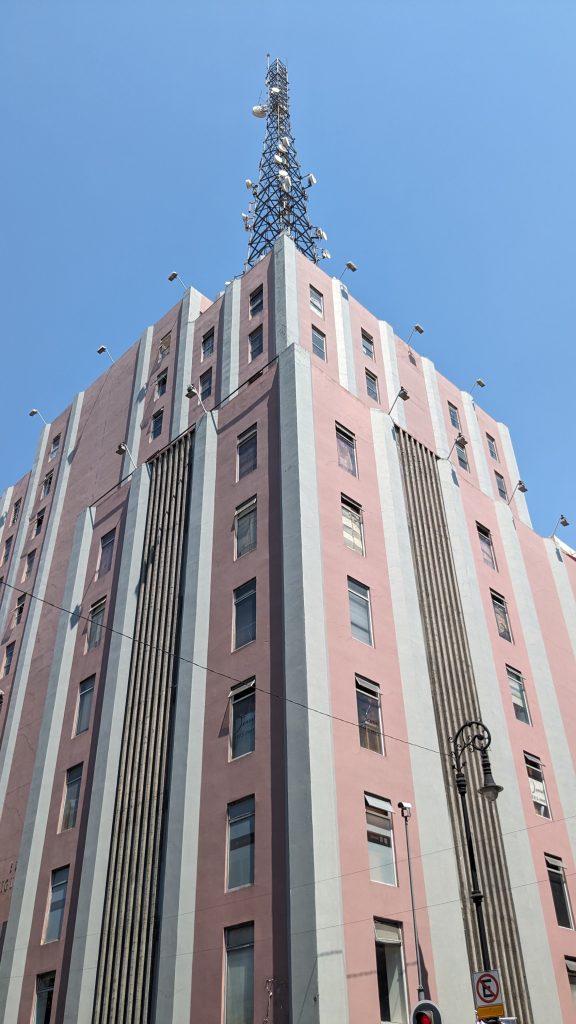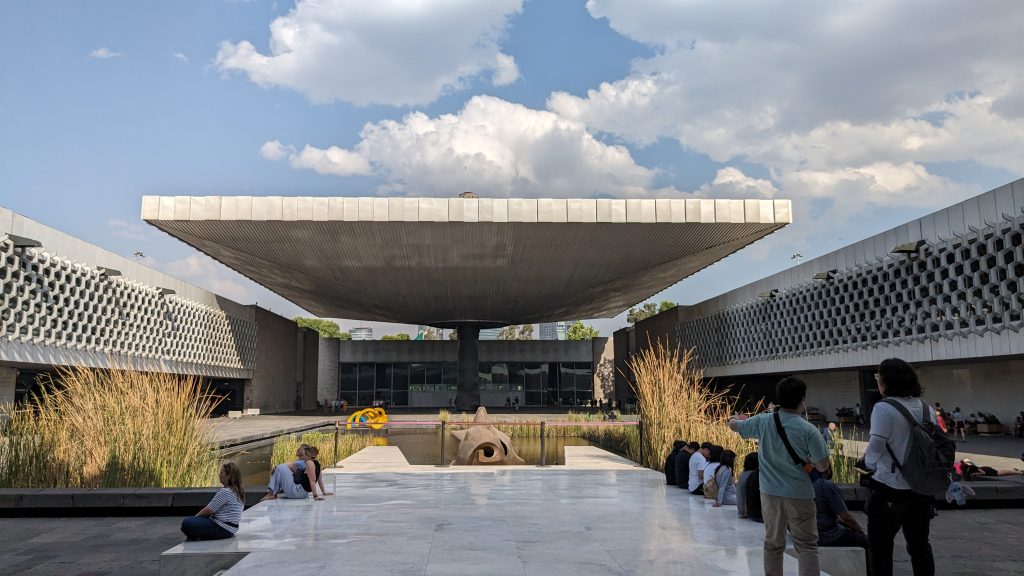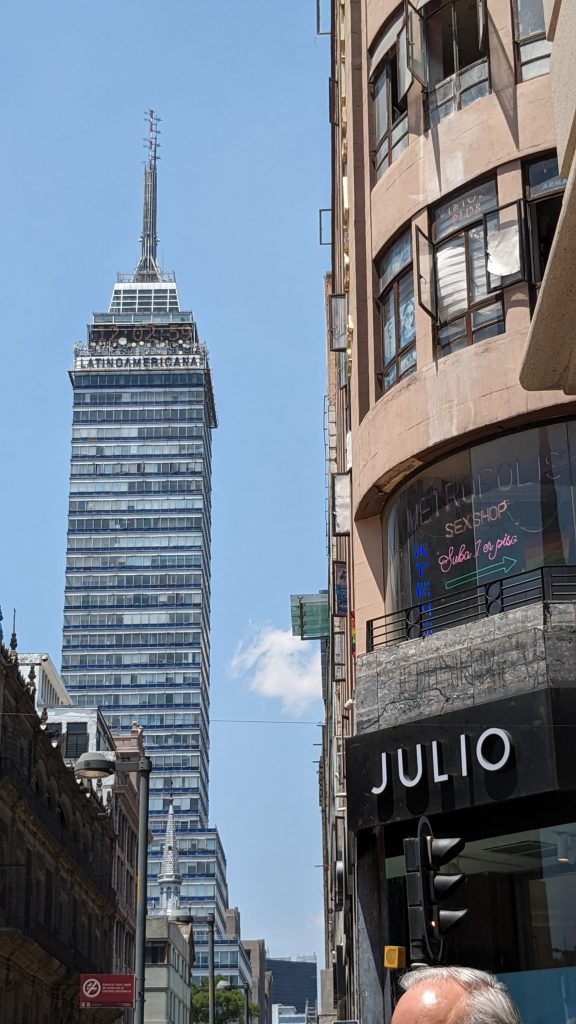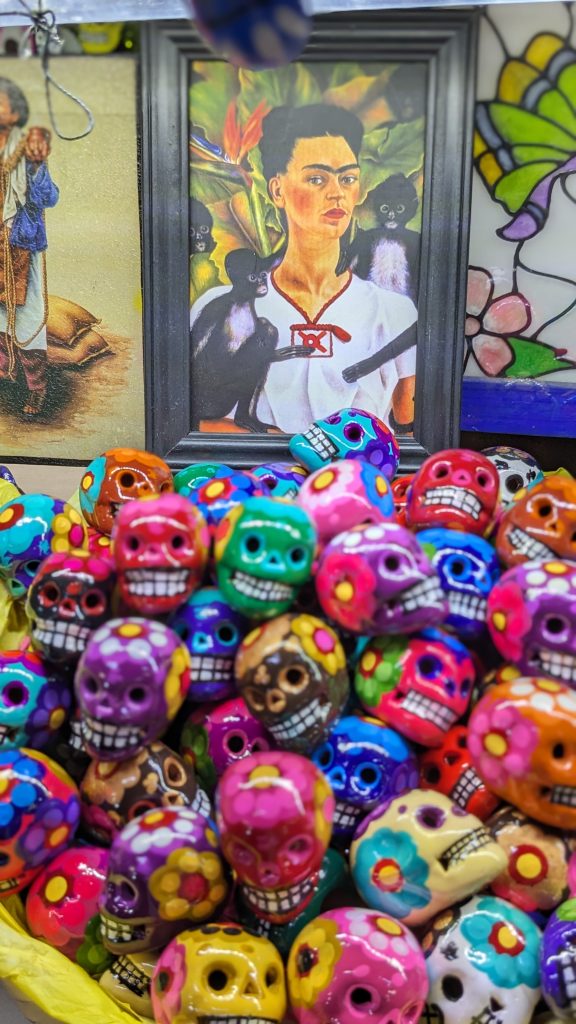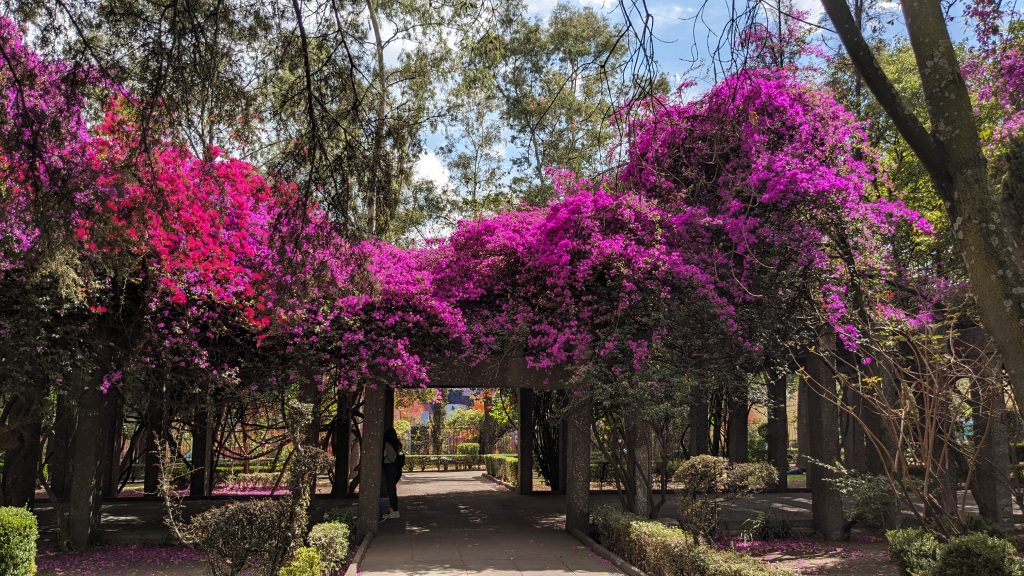In my previous post, I wrote about how Niddo was a life-changing food experience. Before leaving Mexico City for Puebla, we were forced by our stomaches to go to Niddo once more. It was essential before we headed to the coach station. I was particularly excited about going to Puebla as the brilliantly named volcano, Popocatépetl, had been kicking off a lot and our distance from the volcano would be enough to see the show, but not so close as to fear I’d have rocks rain down on my head.
As we got closer to the volcano, the size of it became apparent. It’s enormous at over 5000m (Mount Fuji, by comparison is 3700m) and like an excited puppy, I kept looking out the window, probably with my tongue hanging out, hoping to see a spectacular explosion. Unfortunately, it was a hazy day and the best I saw was a sad little puff of smoke every now and then. Truly disappointing. The approach to Puebla showed a place considerably poorer than Mexico City but as we got closer to the centre, a completely glorious city emerged with very little in the way of modern developments. Clearly, the UNESCO world heritage people got it right. That being said, it was only when I was back in the UK that it seems that Puebla is a large city and it turns out, we stayed mostly in the cutesy bit, totally ignoring the array of tall buildings.

We stayed at Hotel Diana and were given the warmest welcome before being shown to our room, which was the size of a football pitch. During our stay, I was able to peek into other rooms and noticed that ours seemed considerably bigger, but we didn’t splash out on a deluxe room. At £50 a night, it seemed like a really great deal. We explored the Zocalo (main square) and had a delicious sangria at Attico 303, where I tried to get views of the volcano. I asked a member of staff if I could see it from the terrace and she looked at me confused, walked me to a door, then when I asked about the volcano again, she just stared at me and walked off. Mi español es pobre.
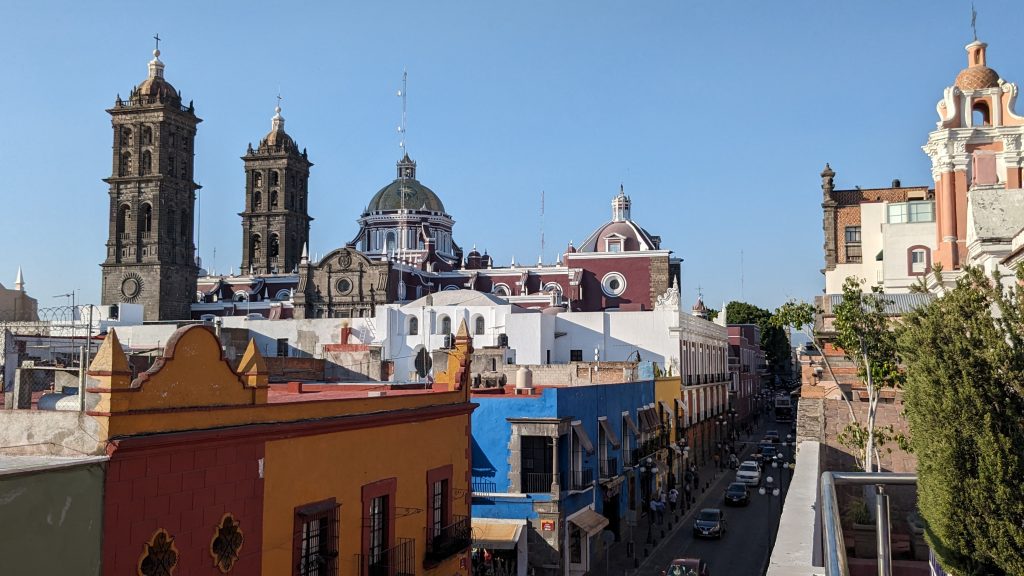
For some culture, we visited the Museo Amparo and it is a world class venue. I loved the work of Ana Bidart, Cecilia Barreto and the photography by Mat Jacob of the Zapatista insurrection in Mexico gave me a glimpse into a part of the country’s history I knew nothing about. I was entranced by the work of Melanie Smith from Poole who created a piece where ancient Mexican artefacts were on display but were covered by a perspex screen. In a country where ancient artefacts are on display in great quantities, not being able to see the work through the perspex made it so tantalising. On the terrace of the museum, you were treated to great views of the city and the volcano, which remained calm and collected.

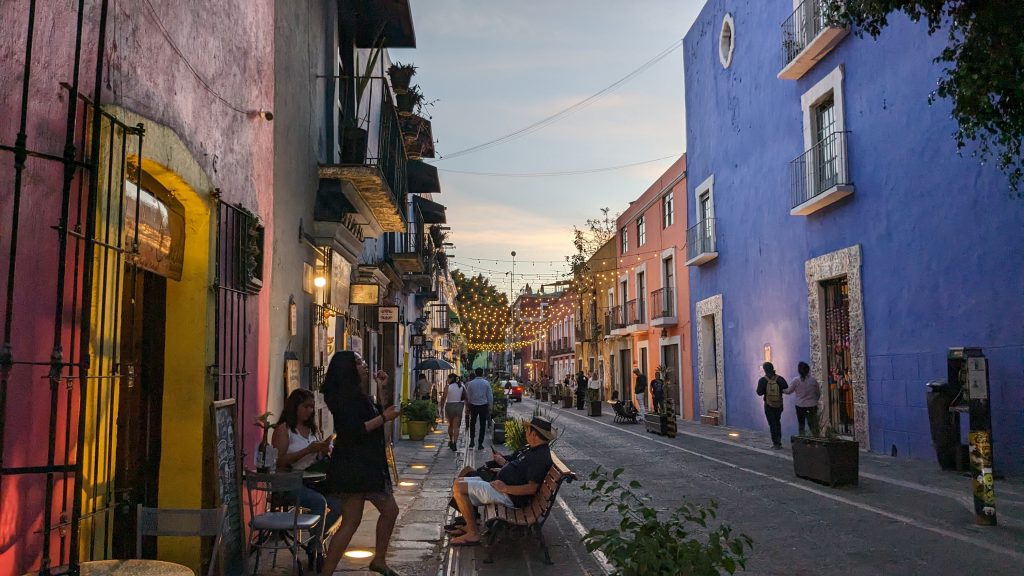
In the late afternoon, we walked to the alley of the frogs – an artist quarter with a market of people selling bits and bobs and a lot of trays. A more tray-centric market than any before suggests mothers across the land are cursing their kids for nicking all the trays in the house and selling them for £20. The area was lit up with many fairy lights making the scene overly picturesque and clearly, a tourist hub. As the afternoon turned to evening, Puebla lit up and became even more beautiful. We ate at Augurio for dinner where I had mole with mole, and a side of mole. I had read that Puebla was famed for its mole, so I had to try it, but I overdid it. The service at Augurio was top-notch, with wonderfully friendly staff. Unfortunately, this was the part of the trip where our stomachs twigged we had moved countries, so we needed to retreat for an early night.

The next morning we nonchalantly pop into a church which is grand, over the top and reminded me that while I remain resolutely not religious, I love that people really get into God. After a quick God-stop, we took an Uber to Cholula to see the world’s largest pyramid. The day was baking, so we sought shelter everywhere we could; in parks, in bars, by trees, near a toilet. Cholula is a so-called magic town. A magic town means it’s a beautiful place or it has natural wonders. The bloody volcano is reasonably nearby to the town and my plan was to walk up to a church and take a spectacular shot of it belching smoke, but yet again, thwarted. We first go to the pyramids. They were built in 300BC, making it hard to figure out what the structures would have originally looked like but the site is huge and, as ever with these things, lots of death was involved.
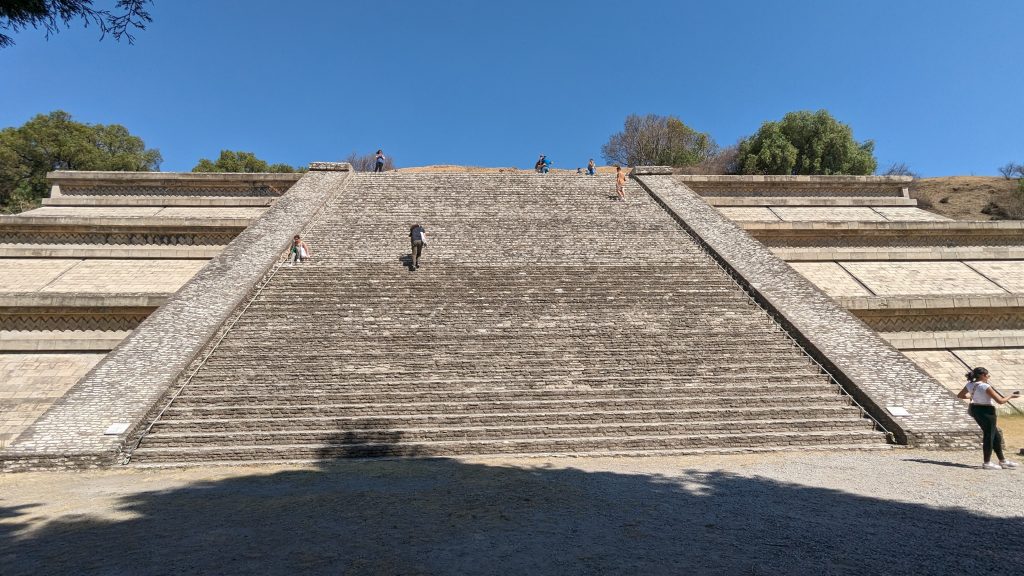
At the end of the site, there is one very well preserved pyramid, which I climbed to the top, realising as I got high up that I didn’t like heights. From this vantage point, you can see over the town and the hateful volcano. After this, there is a church on top of a hill and the hill is actually the pyramid that was the largest in the world. It was covered in dirt by the Aztecs when they heard the Spanish were advancing. Nobody suspected the big pyramid-shaped mound was a pyramid for hundreds of years. I didn’t realise I was climbing the pyramid when I was huffing and puffing up the hill to the church, which is 177m high. Cholula is already 2150m above the sea, so height feels all a bit relative. The church is reliably gorgeous and dramatically Godly. The views towards the volcano are superb. If only it could have bothered to announce my arrival by doing something. Even one mild eruption, timed for my camera, would have been greatly appreciated.


The next day was another glorious morning, and my favourite sort. We had a lot to do in a minimal amount of time. I am up by 6am walking about the town and taking in the sites one last time before breakfast of kings, churros. You can’t get much better than fried strings of dough and chocolate sauce. After this healthy option, we visited a church that has been gold-plated to within an inch of its life and was recommended to us by our hotel. It is a must-see in Puebla. La Capilla del Rosario is a genuinely jaw dropping experience. There is no entrance charge to see the interior, but you do need to buy a postcard, approximately the cost of an entrance fee. A tour guide shows us around and tells us many facts, which are mostly gold related. I have been in many cathedrals and churches and have often been left mightily impressed with the contents but this was on another level, and it is fitting that the church has been described as the eighth wonder of the world, which seems a fair argument to make. The grandeur is everywhere, making it hard to know where to look. The ceiling is magnificent, but so is the altar, where the virgin Mary lives inside a very fancy house. As I looked at the beauty around me, I kept wondering how this earthquake-prone region maintained all this beauty, but I had to go to Oaxaca, where the earthquakes are far more common.
